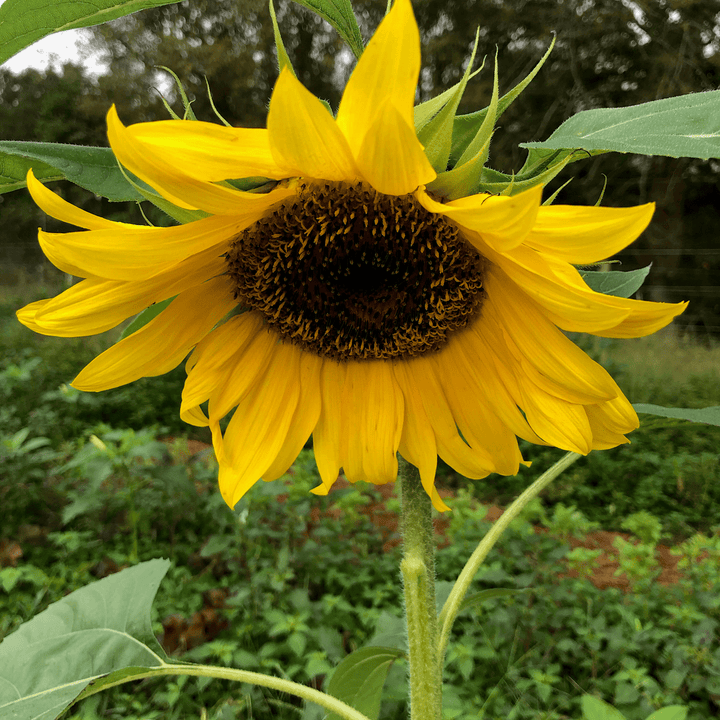The annual sunflower, Helianthus annuus, is a North American species cultivated and harvested for food by Native Americans for centuries. The Spanish introduced it to Europe by the 1500s, where it became widespread as an oil crop and an ornamental. During the 18th century Russian farmers were manufacturing sunflower oil on a commercial scale and a cultivated variety returned to America by the 1880s with the introduction of Mammoth Russian Sunflower.
Direct sow seeds outdoors after the last spring frost when soil temperatures reach 70°F. This annual sunflower bears large flower heads 10-14” across with many edible seeds. Approximately 25 seeds per packet.
Mammoth Russian Sunflower seeds are edible. Larger than traditional sunflower seeds they are delicious when roasted and lightly salted. They can also be used in baking, added to salads, or incorporated into various dishes for texture and flavor.
Sunflower seeds are nutritious, containing protein, healthy fats, vitamins, and minerals, making them a good choice for a healthy snack.
Details
| Genus | Helianthus |
|---|---|
| Species | annuus cv. |
| Exposure | Full Sun | Planting Method | Direct Sow | Planting Depth | 1/2" |
| Days to Emerge | 10 - 14 |
| Plant Spacing | 18" apart |
| Habit | 10 - 12' H |


















